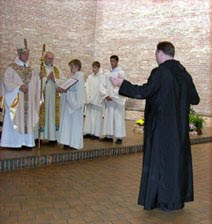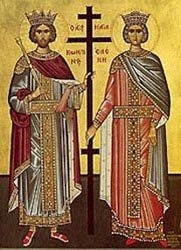As many of you know I have a radio ministry called Shepherd of Souls. As a matter of fact I am recording my 100th episode this week. God has blessed this ministry more than I could ever have imagined when I began a year and half ago. The show is now heard of 16 stations in the USA and one in New Zealand! All the praise goes to God for that!
Yesterday I received a letter in the mail from the Wilkins Radio Network in South Carolina advertising “Broadcast your program of ministry message on 2 Christian Radio Stations for only $15.00.” Anyone who has ever bought radio time will know that this is a steal! The boast stations is some of the larger markets like Pittsburgh, PA and Pensacola, FL.
I am always on the look out for more stations to carry my show, as well as sponsors! So I called them up to see what the deal was. I got an email message yesterday that Mr. Barry Bright would be returning my call today. He did, and this is where it gets good. He told me that he did not think my show would fit on their station because this is a and I quote here “Christian Radio Station.” He went on to ask my beliefs and I told him all of the Orthodox stuff, Creed, Councils, Tradition, Scripture, Sacraments, etc. etc. etc… Well he said we are sola scriptora! Oh yes that old heresy that has no place in Christian Tradition. That is the tradition that gives license to Folks like Pat Robertson to say the Haiti Earthquake was God’s retribution and Jerry Falwells great Christian statement that Hurricane Katrina was God’s was of getting back at New Orleans for all of the Gays and gambling! Such wonderful people they are.
So this brings me to the point of Discrimination. I am not sure, but in my Bible, and oh by the way that Bible you hold so dear, you can thank us for providing that to you! yes that’s right folks we Orthodox and Catholics put that book together, so next time you wish to slam us over the head with it just remember that. So back to my point. I am not sure it is very Christian for Christians to discriminate against each other. His obvious message to me was that we Orthodox are not Christians! WOW someone needs to read their history better. (See previous statement!)
So to all of you who listen to the Wilkins Radio Network at www.wilkinsradio.com I would suggest you write to them and ask them to explain their policy of discrimination. You know our country is under attack by the Godless forces and we Christians should be working together to defeat them, but since folks want to create church in their own image and likeness we will continue to fracture ourselves to the point where there is no one left.
I was thinking about Ancient Faith Radio and the wonderful work going on there. Would they discriminate, well my guess would be if the show was not Orthodox they would but then again, we do not send out ads soliciting business. To the folks from Wilkins Radio Network if you happen to read this and I am sure you wont since I am by your definition not a Christian, you should change your adverts to read “Narrow Minded, Heretical, Christian Talk Radio, for Narrow Minded Heretics!” That would seem to fit more with your business plan.
I also want to thank you because now I am going to work day and night to ensure that stations Like Ancient Faith Radio and Orthodox Christian Network become dominant in this world to give the REAL message of the love of Jesus Christ! Thanks.




